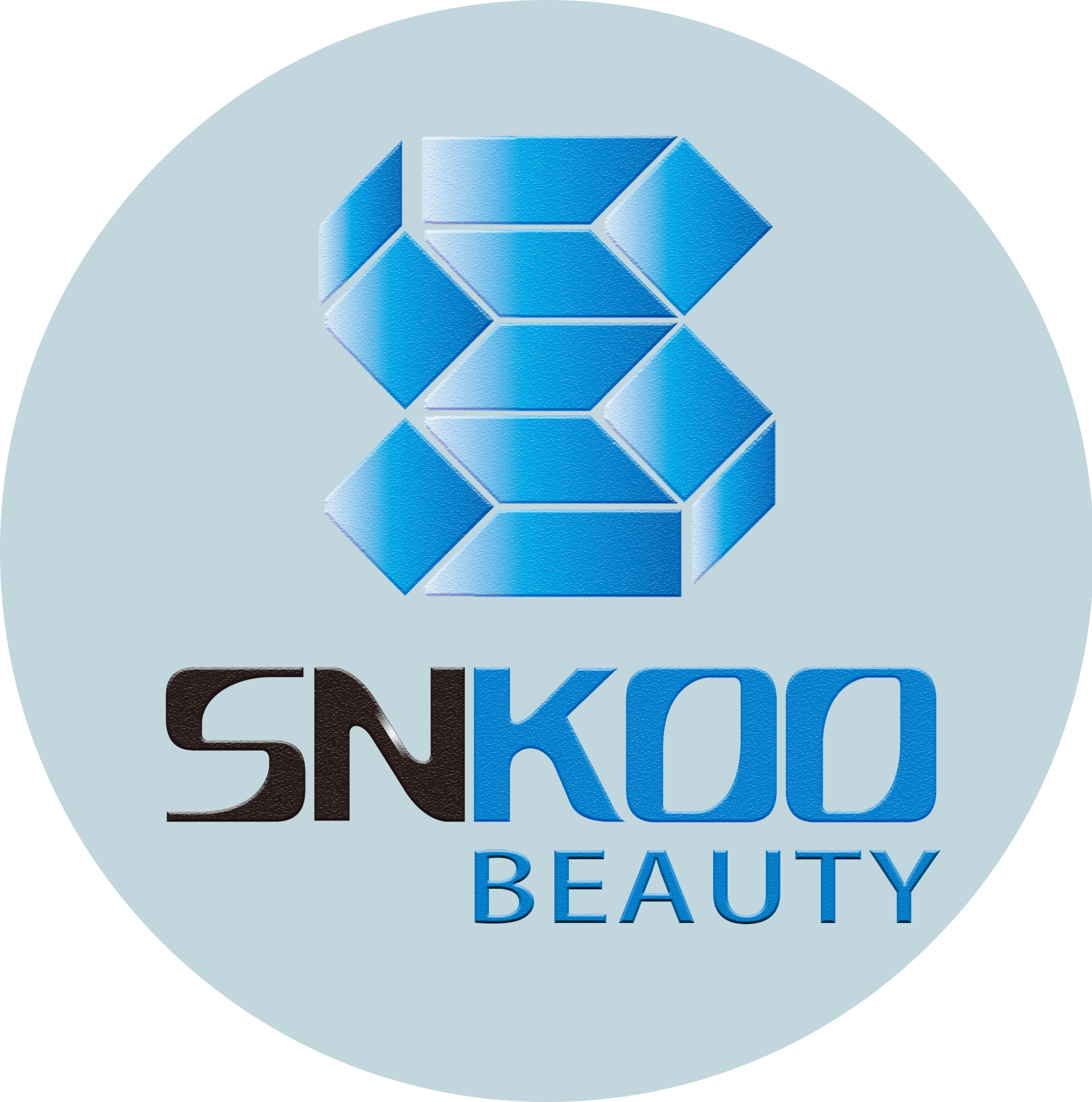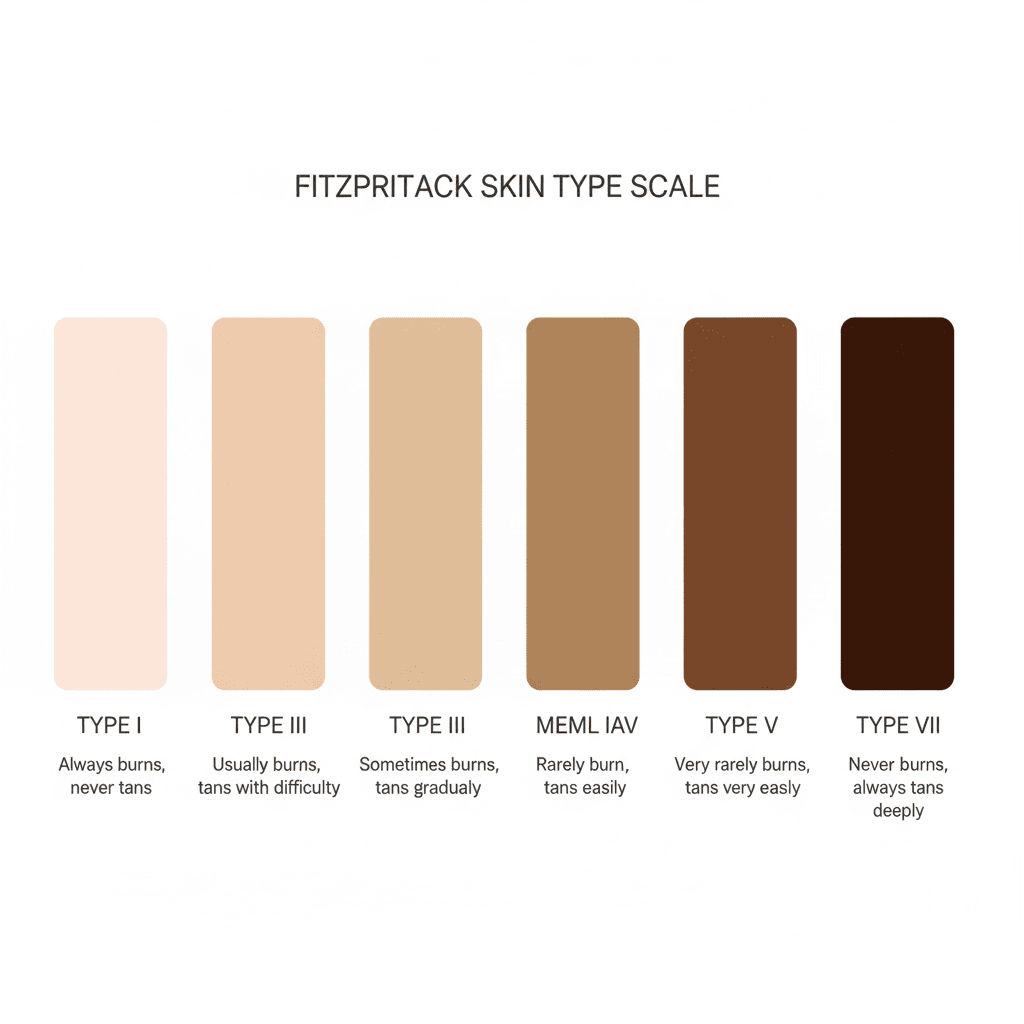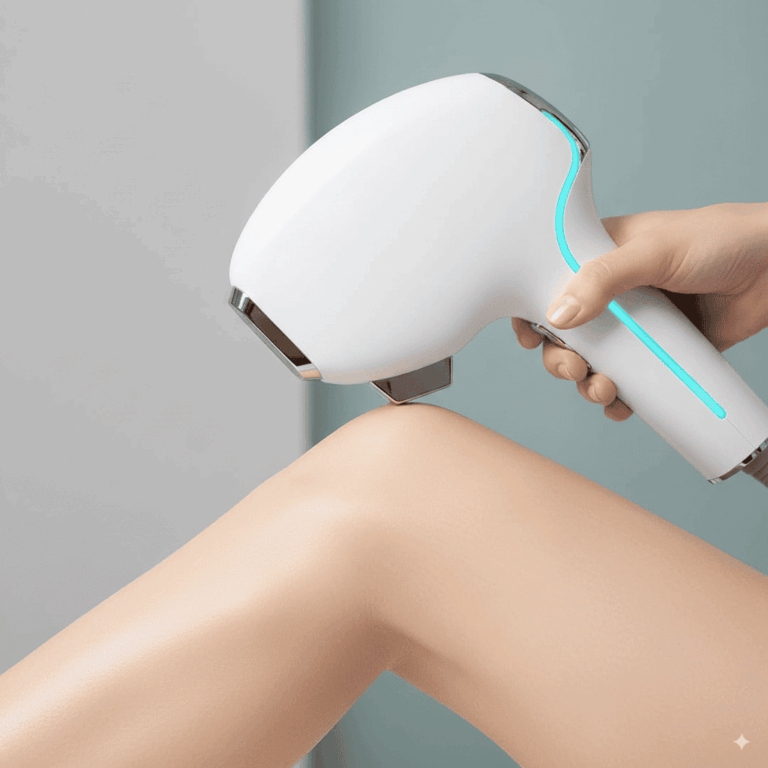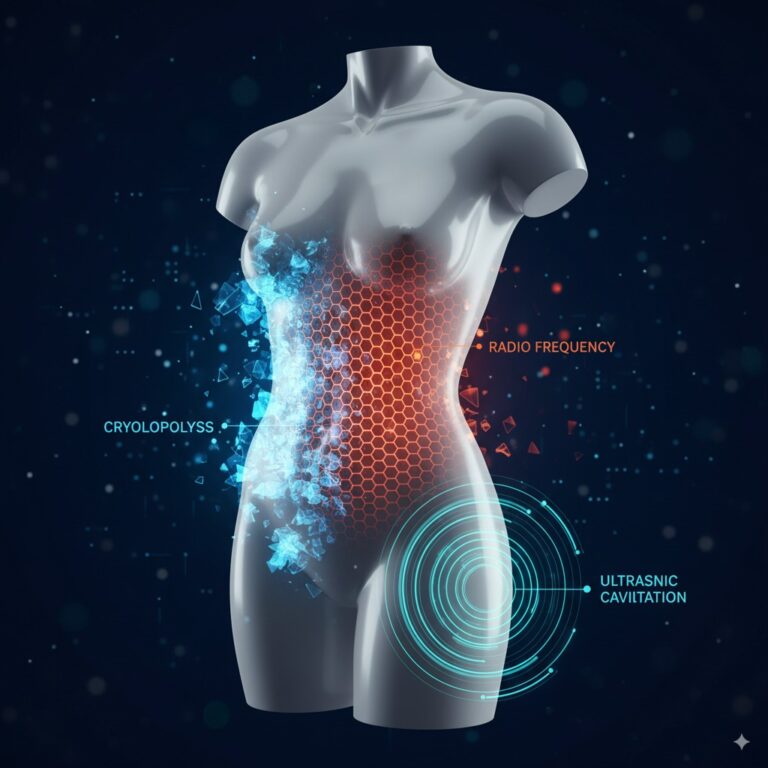Полное руководство по 4-волновому диодному лазерному аппарату для удаления волос: Будущее гладкой кожи
Let’s be honest. The quest for smooth, hair-free skin can feel like a never-ending battle. From the daily ritual of shaving to the eye-watering pain of waxing and the tediousness of epilating, we’ve tried it all. For decades, laser hair removal has been hailed as the long-term solution, a beacon of hope for those tired of the endless cycle. But even this advanced technology had its limitations. Early lasers were often a frustrating one-size-fits-all solution in a world of infinite diversity, working wonders for some but falling short for others.
What if I told you that the game has fundamentally changed? Imagine a technology so intelligent, so versatile, that it could precisely target virtually any hair on any skin tone, safely and effectively. This isn’t science fiction; it’s the reality of the four-wavelength diode laser hair removal machine. This cutting-edge device, combining the power of 755nm, 808nm, 940nm, and 1064nm wavelengths, represents the pinnacle of aesthetic technology. It’s not just an upgrade—it’s a revolution.
In this comprehensive guide, we’re going to dive deep into this groundbreaking technology. We’ll unravel what each wavelength does, how they work together in a perfect symphony, and why this machine is making older methods obsolete. Whether you’re a clinic owner looking to invest in the best equipment or a client seeking the most effective treatment possible, this is everything you need to know.
Beyond a Single Beam: Why Multi-Wavelength Lasers Are a Game-Changer
To understand why a four-wavelength laser is so revolutionary, we need to quickly touch on how laser hair removal works. The basic principle is called selective photothermolysis. It’s a fancy term for a simple concept: the laser emits a specific wavelength of light that is preferentially absorbed by the melanin (pigment) in the hair follicle. This light energy converts to heat, which damages the follicle and inhibits its ability to grow new hair.
The problem? Hair and skin are not monolithic. Melanin exists in both your hair и your skin. A person with fair skin and dark hair has a huge contrast, making it easy for a traditional laser to target the hair follicle without affecting the surrounding skin. However, for a person with darker skin, the laser could have trouble distinguishing between the melanin in the hair and the melanin in the skin, posing a risk of burns or discoloration. Similarly, fine, light-colored hair has less melanin, making it a difficult target for many lasers.
This is where the multi-wavelength approach completely rewrites the rules. Instead of relying on a single “jack-of-all-trades” wavelength that is a master of none, the four-wavelength machine is like having a team of highly-trained specialists. Each wavelength has a unique profile of melanin absorption and penetration depth, allowing a practitioner to create a truly customized and safe treatment for every individual. It’s the difference between using a blunt instrument and a set of precision surgical tools.
Deconstructing the “Quattro” Power: What Each Wavelength Does
The magic of this machine lies in its four distinct wavelengths. Think of them as four different musical notes, each with a specific purpose, that can be played alone or together to create a beautiful piece of music—in this case, the music of permanently smooth skin. Let’s break down each “note.”
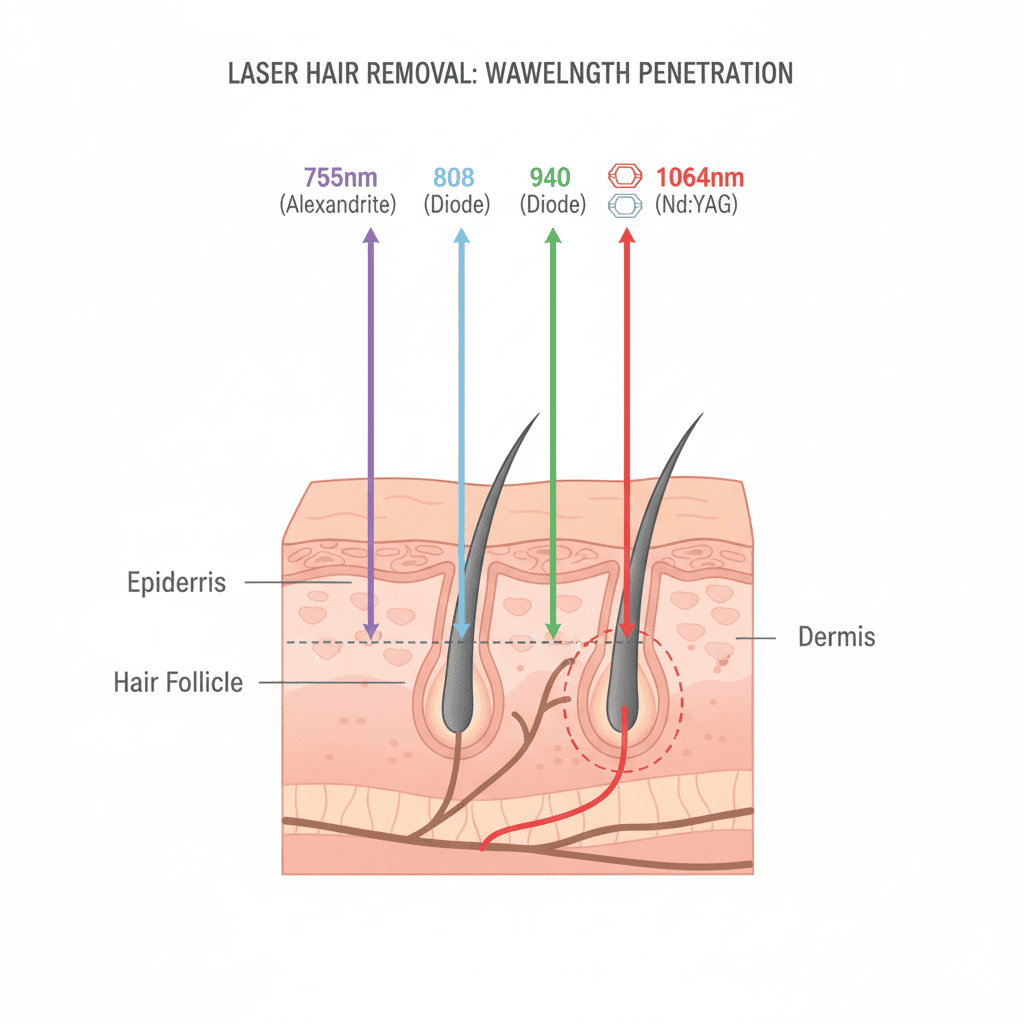
The 755nm Alexandrite Wavelength: The Master of Light Skin & Fine Hair
The 755nm wavelength is the classic “Alexandrite” laser. It has extremely high melanin absorption, making it incredibly effective at zapping pigment.
- Its Superpower: This wavelength is a sharpshooter for hair that sits close to the skin’s surface. Because its energy is so powerfully absorbed by melanin, it’s the undisputed champion for treating light skin tones (Fitzpatrick types I-III) with dark, fine hair. Think of those stubborn upper lip hairs or fine arm hairs that other lasers might miss. The 755nm wavelength locks onto them with unparalleled precision.
- Analogy: If the hair follicle is a target, the 755nm laser is a sniper that excels at hitting surface-level targets with pinpoint accuracy. It’s fast, efficient, and leaves no room for error on its intended target.
The 808nm Diode Wavelength: The Versatile Workhorse
The 808nm is the go-to “diode” wavelength and has long been considered the industry standard for laser hair removal. It offers a perfect balance of features that make it a fantastic all-rounder.
- Its Superpower: The 808nm wavelength offers moderate melanin absorption and deeper penetration than the 755nm. This combination makes it exceptionally versatile and safe for a broader range of skin types (Fitzpatrick I-IV). It’s the powerhouse for treating larger areas like the legs, back, and chest, efficiently targeting coarser, deeper hair follicles with speed and efficacy.
- Analogy: The 808nm laser is the reliable and powerful workhorse of the team. It can handle the bulk of the work, adapting to various terrains (skin and hair types) with consistent, trustworthy results.
The 940nm Infrared Wavelength: The Deep-Penetrating Specialist
While less discussed in traditional hair removal circles, the 940nm wavelength is a crucial and sophisticated addition to this powerful quartet. Its function is slightly different and adds a new layer of therapeutic benefit.
- Its Superpower: The 940nm wavelength penetrates even deeper into the tissue. Its primary target is less the melanin itself and more the microvasculature—the tiny blood vessels (like hemoglobin and oxyhemoglobin) that supply the hair follicle with nutrients. By gently coagulating these supply lines, it further weakens the follicle’s ability to regenerate. This is particularly useful for stubborn, deeply rooted hairs and provides an extra “kick” to ensure the treatment is effective.
- Analogy: Think of the 940nm as the “logistics expert.” While other wavelengths attack the follicle directly, this one cuts off its supply chain, ensuring it can’t rebuild and making the overall treatment more permanent.
The 1064nm Nd:YAG Wavelength: The Gold Standard for Darker Skin Tones
The 1064nm wavelength is the celebrated “Nd:YAG” laser, and its inclusion is what makes a multi-wavelength machine truly inclusive and revolutionary.
- Its Superpower: This wavelength has the lowest melanin absorption of the four. At first, that might sound like a disadvantage, but it’s actually its greatest strength. Because it’s not aggressively seeking out melanin, it can safely bypass the pigment in the epidermis (the top layer of skin). Instead, it penetrates deeply to target the follicle at its root. This makes the 1064nm wavelength the safest and most effective option for darker skin tones (Fitzpatrick IV-VI), where the risk of surface burns from other lasers is high.
- Analogy: The 1064nm laser is a deep-sea diver. It skillfully swims past the surface-level distractions (epidermal melanin) to reach its true target lurking in the depths (the hair bulb and its blood supply), ensuring a safe and successful mission.
The Symphony of Wavelengths: How They Work Together for Superior Results
So, we have four specialists. But how does the machine leverage them? This is where the true innovation shines. A four-wavelength diode laser doesn’t just force you to pick one. It combines their strengths for a result that is far greater than the sum of its parts.
H4: Simultaneous Emission: A Multi-Pronged Attack on Unwanted Hair
Modern machines can emit these wavelengths simultaneously through a single handpiece. What does this mean for your hair follicle? It’s being hit from all angles and at all depths in a single pulse of light.
Imagine a single patch of skin on your leg. In that small area, you have some hairs that are fine and shallow, some that are coarse and deep, and all are in different phases of their growth cycle. A single-wavelength laser might effectively treat some but miss others. A four-wavelength pulse, however, sends out the 755nm to tackle the fine surface hair, the 808nm and 940nm to target the bulk of the follicles at mid and deep levels, and the 1064nm to safely reach the deepest bulbs without harming the skin. This multi-pronged attack ensures a much higher percentage of follicles are successfully disabled in every single session, leading to faster, more comprehensive, and more permanent results.
H4: From Fitzpatrick I to VI: True Inclusivity in Action
For years, the aesthetics industry has struggled with inclusivity. People with darker skin tones were often told they were not candidates for laser hair removal, or they faced significant risks with outdated technology. The combination of the 808nm and, most importantly, the 1064nm wavelength shatters this barrier. By having a tool specifically designed to be safe on melanin-rich skin, practitioners can finally offer effective laser hair removal to virtually everyone. This isn’t just a technological advancement; it’s a step towards greater equity and accessibility in beauty treatments.
More Than Just Wavelengths: Key Features of Modern 4-Wavelength Machines
The incredible laser technology is the star of the show, but the supporting cast of features is what elevates the entire treatment experience from good to exceptional.
Advanced Cooling Systems: Prioritizing Comfort and Safety
If you’ve ever heard horror stories about laser hair removal feeling like a “rubber band snapping” against your skin, that’s often due to inadequate cooling. The heat generated to destroy the hair follicle can be uncomfortable. Top-tier four-wavelength machines feature sophisticated contact cooling systems, often using a sapphire crystal tip that is chilled to sub-zero temperatures.

This chilled tip is in constant contact with your skin during the treatment. It pre-cools the epidermis, keeps it cool during the laser pulse, and post-cools it immediately after. This has two huge benefits:
- Comfort: It dramatically reduces the sensation of heat, making the treatment virtually painless for most people.
- Safety: By protecting the epidermis, it drastically minimizes the risk of burns, blisters, or pigmentation changes, especially on sensitive skin.
Intuitive Interfaces and Smart Technology
These aren’t clunky machines from a decade ago. Modern devices come equipped with high-definition touchscreens and intelligent software. Practitioners can select the client’s skin type, hair color, and hair density, and the machine will recommend optimal settings. This blend of practitioner expertise and machine intelligence ensures that every treatment is perfectly calibrated for maximum efficacy and safety. For clinic owners, this means easier staff training and more consistent, reliable results for clients.
The Evolution of Hair Removal: 4-Wavelength Diode vs. Traditional Lasers and IPL
How does this stack up against what’s already out there? Let’s draw a clear comparison.
- vs. Single-Wavelength Lasers (e.g., standalone Alexandrite or Nd:YAG): While effective for their niche demographics, single-wavelength lasers are inherently limiting. A clinic would need to purchase multiple expensive machines to treat a diverse clientele. The four-wavelength machine is like having four separate lasers in one, offering unmatched versatility and a far better return on investment. It treats more people, more effectively, with a single device.
- vs. IPL (Intense Pulsed Light): This is a common point of confusion. IPL is not a laser. IPL uses a broad spectrum of light, like a flashbulb, that scatters in the skin. A laser uses a single, concentrated, and coherent beam of light. Think of it as the difference between a floodlight (IPL) and a laser pointer (laser). Because laser light is so focused, it’s more powerful and precise in targeting the hair follicle. This generally means fewer sessions are needed compared to IPL, and it is significantly safer for darker skin tones, as the scattered energy of IPL is more likely to be absorbed by epidermal melanin.
Is a 4-Wavelength Diode Laser the Right Choice for You?
We’ve covered the science, the technology, and the benefits. So, let’s bring it all together.
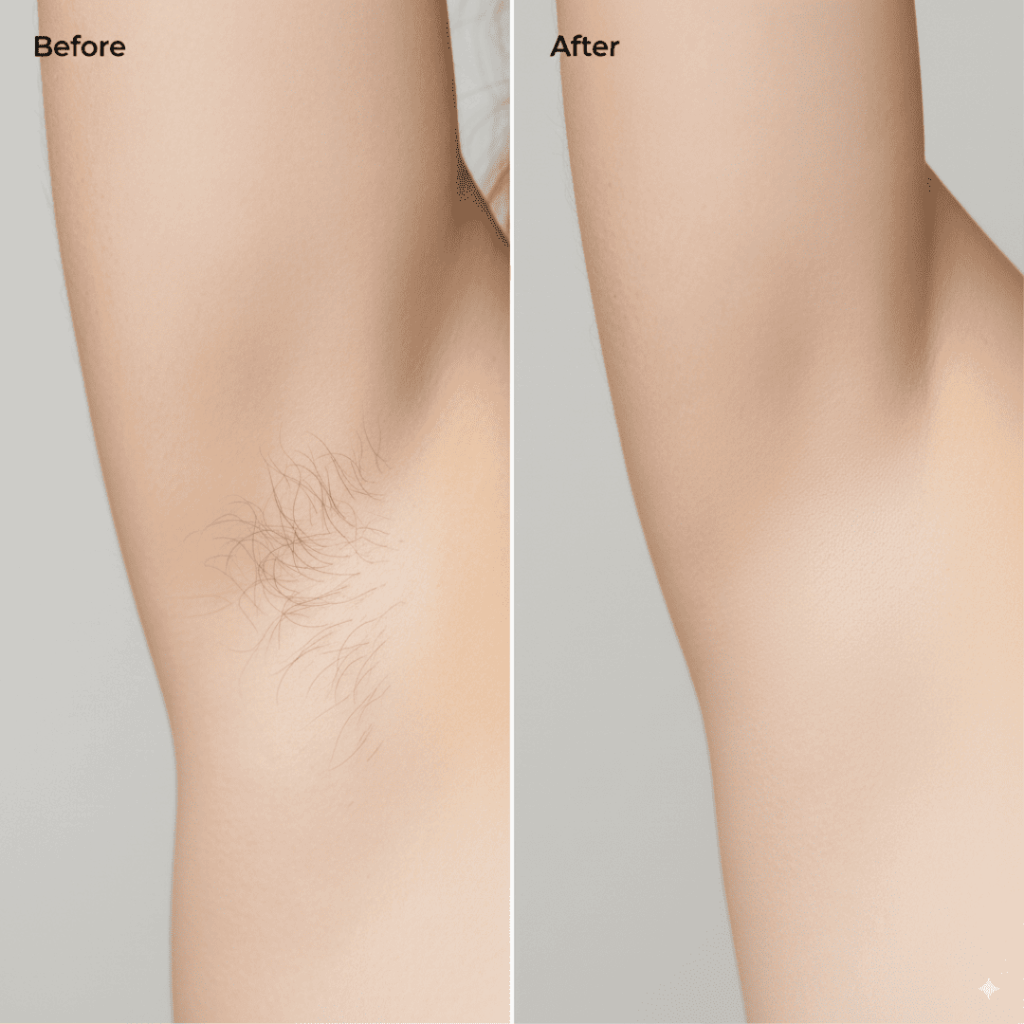 |
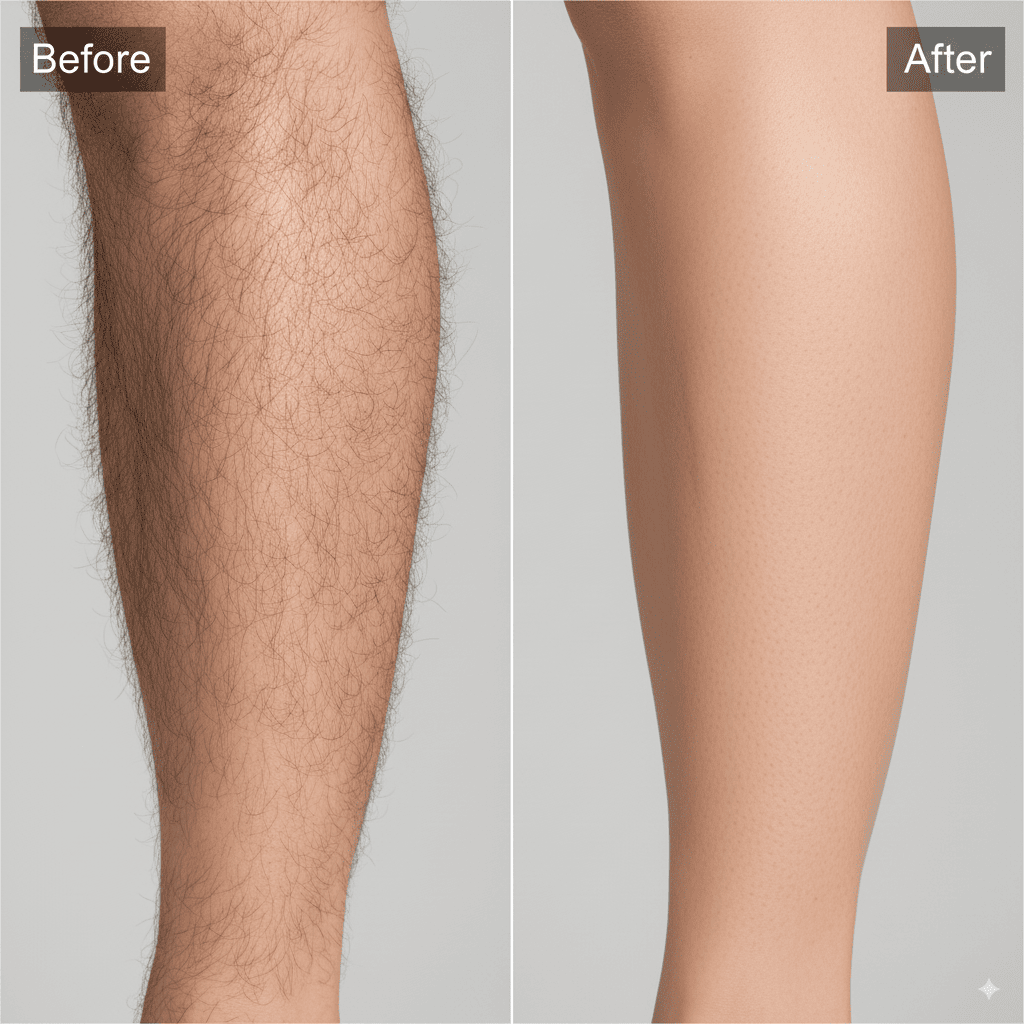 |
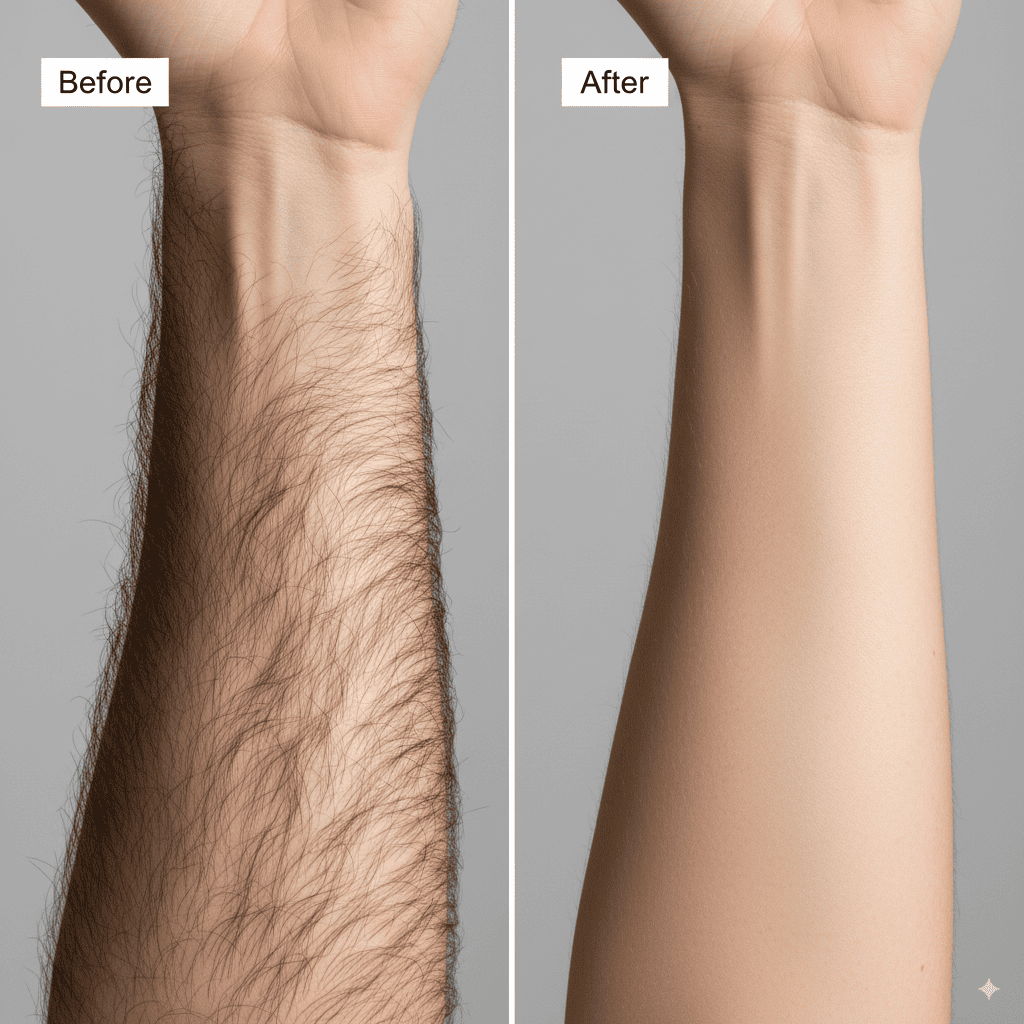 |
For Clients: If you are seeking laser hair removal, asking for a clinic that uses a multi-wavelength machine (specifically one with 755/808/940/1064nm) is one of the smartest things you can do. It means you are opting for a treatment that is:
- More Effective: By targeting hair at multiple depths, you’re likely to see better results, faster.
- Безопаснее всего: Универсальность, особенно включение длин волны 1064нм и усовершенствованной системы охлаждения, означает, что лечение может быть идеально адаптировано к тону кожи, минимизируя риски.
- Больше удобств: Современная технология охлаждения делает этот опыт гораздо более приятным, чем старые лазерные системы.
- В Том числе: Независимо от цвета кожи, от самого легкого до самого темного, эта технология предназначена для работы на вас.
Для владельцев клиник: Инвестирование в 4 - волновый диодный лазер является стратегическим бизнес-решением.Благодаря этому ваша клиника находится на переднем крае индустрии.Вы можете:
- Расширить круг клиентов: Перестань отворачиваться от клиентов с темными оттенками кожи или от тех, с прекрасными волосами, которые ранее были неизлечимы.
- Достижение превосходных результатов: Повышение удовлетворенности клиентов и рефералов на слух, обеспечивая более эффективное и комфортное лечение.
- Оптимизируйте свои операции: Объедините ваши технологии в одну универсальную, эффективную и удобную в использовании машину.
В заключение следует отметить, что четырехволновая лазерная машина для удаления волос диода является не просто еще одним элементом оборудования.Это изменение парадигмы, воплощающее в себе принципы персонализации, инклюзивности и эффективности.Это кульминация десятилетий исследований, направленных на достижение изначального обещания лазерной эпиляции для всех.Это будущее, и оно уже здесь.
Часто задаваемые вопросы (FAQs)
1. Действительно ли безболезненно лечение лазером длиной 4 волны? В то время как "безболезненно" субъективно, большинство клиентов описывают ощущение как очень мягкое, быстрое тепло.Благодаря усовершенствованным интегрированным системам охлаждения, которые удерживают поверхность кожи при низкой температуре, процедура значительно более удобна, чем традиционные лазеры или эпиляция.Это, как правило, очень хорошо переносится.
2. Сколько сеансов мне нужно будет сделать без волос? Количество сеансов зависит от типа волос, цвета, плотности и зоны лечения.Волосы растут в циклах, и лазер может эффективно поражать только волосы в фазе активного роста (анаген).Как правило, курс 6-8 сеансов, с интервалом 4-8 недель, рекомендуется для захвата всех волосков в их активном цикле и достижения оптимального, длительного сокращения волос.
3. У меня светлые светлые или седые волосы.Этот лазер будет работать на меня? Это является важным ограничением всех светлых удаления волос.Лазеры работают, нацеливаясь на меланин, пигмент в волосах.Так как светлые, красные, серые или белые волосы содержат очень мало меланина или нет, лазер не имеет цели для фиксации.Поэтому даже эта усовершенствованная машина не эффективна на очень светлых или непигментированных волосах.
4. Может ли эта машина действительно лечить все оттенки кожи, включая очень темную кожу? - да. - да.Это одно из его наиболее значительных преимуществ.Включение 1064нм Nd: длина волны YAG, которая имеет низкую абсорбцию меланином и глубокое проникновение, была специально разработана, чтобы быть безопасной и эффективной для темных тонов кожи (фитцпатрик типов V и VI).Это делает 4 - волновая платформа одним из самых инклюзивных и безопасных решений удаления волос на рынке сегодня.
5. Есть ли свободное время после сеанса лечения? Время простоя практически отсутствует.Большинство клиентов могут вернуться к нормальной деятельности сразу после сеанса.Вы можете испытывать легкую покраснение или легкую опухоль в обработанной области, подобно солнечному ожогу, но это, как правило, проходит в течение нескольких часов.Крайне важно избегать прямого солнечного воздействия и использовать широкий спектр SPF на обрабатываемой площади.
